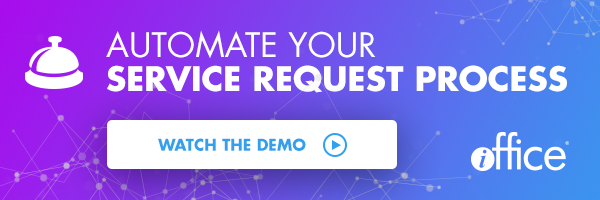Doing This One Thing Will Seriously Simplify Your Work Orders


Keeping up with work orders and building maintenance is no doubt an important part of any facility manager’s job.
But it can quickly become all-consuming. Every request seems urgent, which can keep FMs from focusing on other big-picture priorities.
And the larger the company, it seems, the larger and more complex the technology stack becomes—which can make even simple service requests frustrating.
That’s why if there’s one thing your company can do to streamline service requests right now, it’s this: Move to a single ticketing system.
That’s it.
We told you it was simple. But here’s why it’s so important and how to do it right.
The Problems With Using Multiple Ticketing Systems
Using multiple ticketing systems within a single organization is more common than you might think. We see it all the time.
One large enterprise was using seven different ticketing systems to manage things like maintenance, IT issues, catering, reservations and visitors.
This may not seem like such a big deal, but consider it from both the facility manager’s perspective and the employee’s perspective.
For the facility manager, that’s seven different systems to check daily.
That’s a long list of tasks to delegate to your team and then monitor. None of them are connected, so it’s easy to miss the fact that server issues in one building might be related to an air conditioning system that’s failing in the same location. Or the fact that 10 of your conference rooms haven’t been used all week, so they don’t need to be cleaned. (When you have 70 conference rooms to maintain, you’ll welcome any opportunity to save on cleaning costs.)
And if you’re trying to gauge total maintenance costs, it’s going to take some work. You’ll need to export and consolidate data from several different systems.
From the employee’s perspective, that’s seven different software systems to remember, each with its own username and password that was likely created at different times. And there’s confusion about which system to use and when. Is a broken conference room speaker a maintenance issue or an IT issue? Do we have to register a guest in both our visitor management system and our security system so he can get the proper credentials?
It’s easy to imagine why an employee might just bypass the service request system and write a Post-it note instead. Now imagine you have 50,000 employees and you’re the facility manager receiving 100 Post-its each day.
Moving To A Single System For Work Orders
Moving to a single, robust system will streamline all your company’s requests so you can easily assign them to your team, check the status and keep track of the total costs.
So how can you make sure you’re choosing the right ticketing system?
Here are five critical features to look for
1. A 100% SaaS System
Your organization is growing, and your service request system has to be able to keep up. That means it needs to be accessible from anywhere and updated regularly. Using a software-as-a-service (SaaS) platform is the only way to make sure you always have a fully functional ticketing system that’s available anywhere.
2. Robust Functionality
If you’re going to make the switch to a new service request system, you want it to include every single capability you’ve come to expect in your current system—and then some. It should be easy for your team to submit requests, sort them, search for them and dispatch. Your team should also be able to attach instructions, contracts and images to service requests.
3. An Employee-Centric Mobile App
Of course you want it to be easy for your FM team, but you also want it to be just as easy for employees to use. If it takes more than 60 seconds to submit a service request, you’re going to lose them. (Remember the Post-its?) These days, employees expect the technology they use in the workplace to mirror the technology they use at home, so a mobile app is ideal.
4. Easy Integration With Other Technology
The whole point of moving to a single system is to simplify facilities management. That’s why it’s so important that the system you choose isn’t just helpdesk software or standalone service request software, but built with the backbone of a robust IWMS. It should integrate with the solutions you use for space management, room reservations, visitor management and more.
5. Insights
Last but certainly not least, the solution you choose for service requests should make it easy for you to see the big picture of your maintenance efforts. You should be able to glance at a facility management dashboard and see how your service requests break down across different types, buildings and departments. And you should be able to easily see the impact it had on your bottom line.
Moving to a single, robust system for service requests is the best way to streamline your work order process and improve your employee experience.
Thinking about making the switch? Watch this short demo video to learn more about our service request software.
